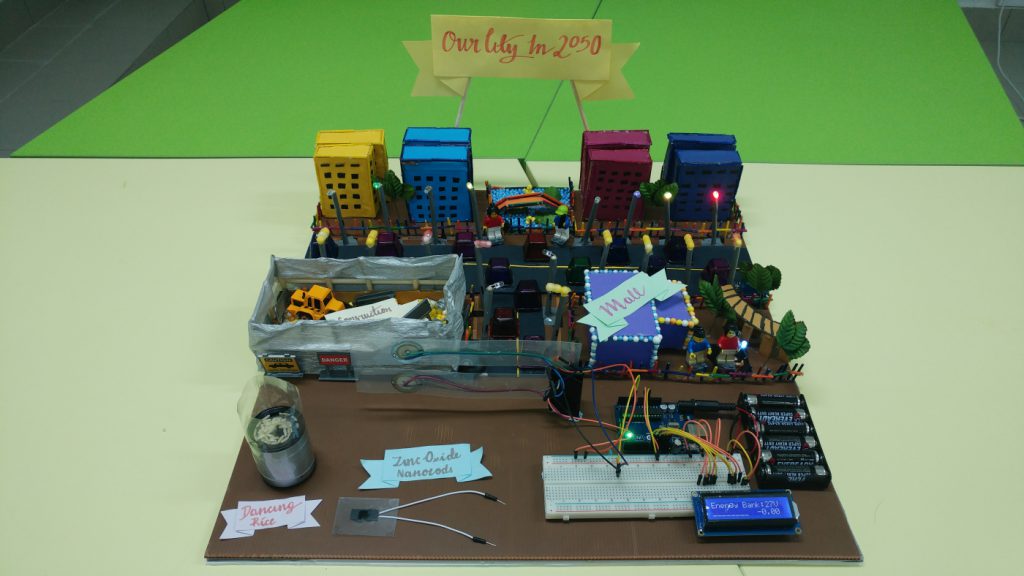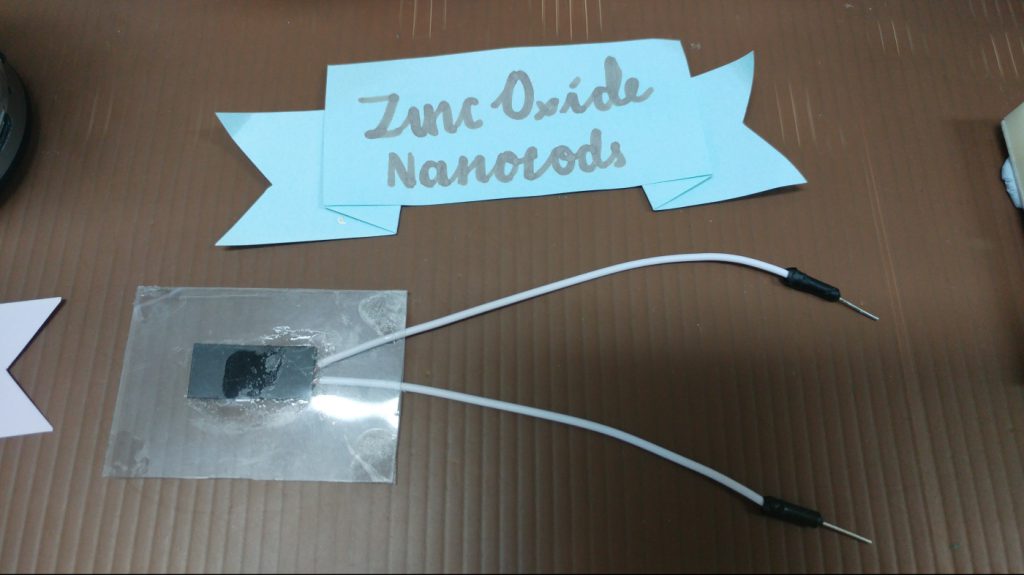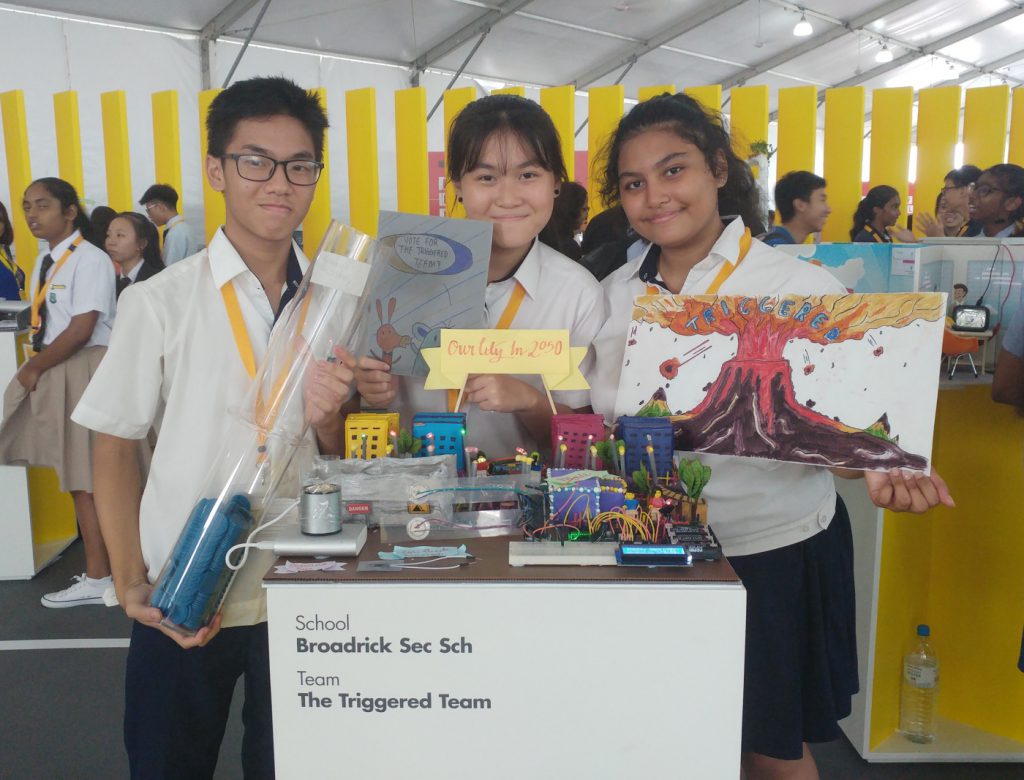By Aminah Hydar, Benjamin Wong and Chen Siyu of Broadrick Secondary School
Imagine waking up one day with limited electricity, reserved only for powering essential appliances at home, in schools and in offices. No more watching television, charging our phones and gadgets, using our computers, or even turning on the air-conditioner on a warm day. Seems unlikely?
Well, if we are not careful about how we consume electricity, this could happen in the future!
This is because the fossil fuels used to generate electricity such as oil, natural gas and coal are predicted to run out by 2052, 2060 and 2088 respectively. Where will we get the electricity we need to power our lives then?
In order to solve this problem, scientists around the world have been researching and experimenting on new, clean and renewable energy, and we have a bright idea for them! We are exploring the possibility of harnessing sound energy in the future!

Sound Energy
Sound is a form of energy that is transferred from one point to another as a longitudinal wave. It is produced by vibrating sources which causes the layers of air particles around it to move, allowing the sound waves to travel from the source to our ears.
If you have ever touched a speaker when it is turned on, you would have felt the vibration of sound! In a little experiment, we made rice dance with just the vibration of sound.

Try this: touch your throat and make a humming sound.
Do you feel the vibrations of your vocal chords?
Converting sound into electricity
As our world population increases, cities like Singapore are getting more crowded and congested. Noisy traffic congestion, noisy construction sites, noisy train stations, noisy shopping malls, noisy schools and offices are becoming part and parcel of city life.
What if we could generate electricity from all this noise?
At Queen Mary University of London in the School of Material Science and Engineering, scientists are working with a material called Zinc Oxide and making it into nanorods which can generate electricity when subjected to movement and vibrations, converting the vibrational energy of sound into electricity!
In order to increase the amount of electricity produced, multiple Zinc Oxide nanorods can be attached to lampposts and pillars along roads, expressways, and in construction sites and malls to make it possible to harness the otherwise wasted energy of sound.

Replica of nanorods used to generate electricity from sound.
Thinking for the future
Sound will never run out and it is everywhere so why not “recycle” it and give it a second life!
We hope this idea can help generate a large amount of electricity for cities all around the world, and make it a viable source of renewable energy, just like solar energy and wind energy.
By placing the device in noisy locations to store the electrical energy, we hope to power street lamps at night and even create charging stations at bus stops, train stations and shopping malls to allow for charging of personal devices. Wouldn’t it be great if it can be made into a portable device for people to charge up their personal devices on the go with the noise from their environments too?
Our ultimate goal is to empower everyone living in cities to be less reliant on non-renewable energy. The future is ours and young scientists like us can play a part in thinking of creative ways to solve our world’s energy problem.
It’s your turn now! Can you think of a bright idea too?

Aminah, Benjamin and Siyu at the Bright Ideas Challenge 2018




.jpg?sfvrsn=f1e52570_0)

d1-01.jpg?sfvrsn=a0be5788_2)


